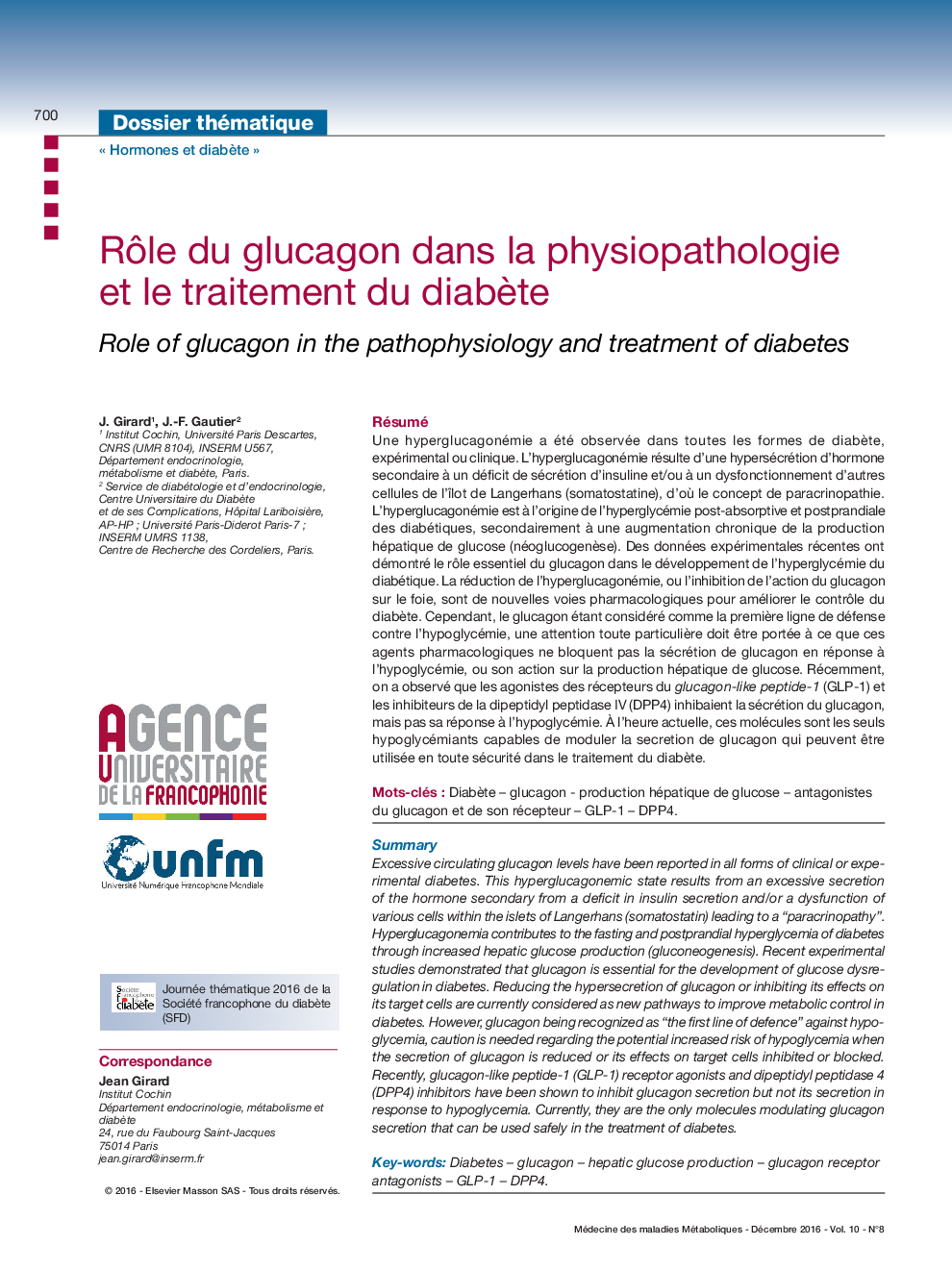| Article ID | Journal | Published Year | Pages | File Type |
|---|---|---|---|---|
| 8723553 | Médecine des Maladies Métaboliques | 2016 | 7 Pages |
Abstract
Excessive circulating glucagon levels have been reported in all forms of clinical or experimental diabetes. This hyperglucagonemic state results from an excessive secretion of the hormone secondary from a deficit in insulin secretion and/or a dysfunction of various cells within the islets of Langerhans (somatostatin) leading to a “paracrinopathy”. Hyperglucagonemia contributes to the fasting and postprandial hyperglycemia of diabetes through increased hepatic glucose production (gluconeogenesis). Recent experimental studies demonstrated that glucagon is essential for the development of glucose dysregulation in diabetes. Reducing the hypersecretion of glucagon or inhibiting its effects on its target cells are currently considered as new pathways to improve metabolic control in diabetes. However, glucagon being recognized as “the first line of defence” against hypoglycemia, caution is needed regarding the potential increased risk of hypoglycemia when the secretion of glucagon is reduced or its effects on target cells inhibited or blocked. Recently, glucagon-like peptide-1 (GLP-1) receptor agonists and dipeptidyl peptidase 4 (DPP4) inhibitors have been shown to inhibit glucagon secretion but not its secretion in response to hypoglycemia. Currently, they are the only molecules modulating glucagon secretion that can be used safely in the treatment of diabetes.
Related Topics
Health Sciences
Medicine and Dentistry
Endocrinology, Diabetes and Metabolism
Authors
J. Girard, J.-F. Gautier,
